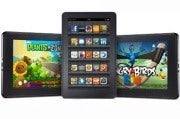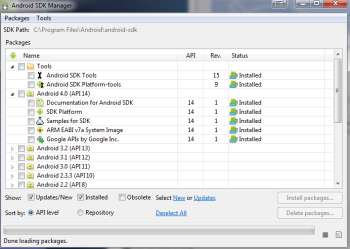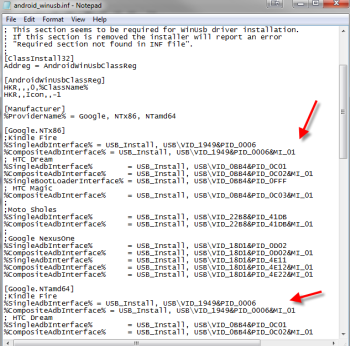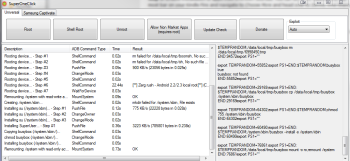 |
| Kindle Fire vs Ipad: Which Is Best? Credit-Flickr |
Holiday shoppers will definitely be checking out tablets this year and the number one question is Kindle Fire vs Ipad: Which Is Best? Shoppers are doing their due dilligence, checking what both are offering and of course the price tag. Lots of people already have one of the tablets, perhaps a neighbor, classmate, or relative, but you may not be sure if you should buy, here's what Bloomberg News suggests which is best.
Kindle Fire vs Ipad: Which Is Best?
Nov. 29 (Bloomberg) -- Samsung Electronics Co. and Lenovo Group Ltd. are joining Amazon.com Inc. in selling low-priced tablets this holiday season, stepping up efforts to grab sales from Apple Inc.’s market leading iPad.You've pondering Kindle Fire vs Ipad: Which Is Best? Now you have better information to help with that choice. Honestly it depends on if you want simply a content device or do you want a tablet computer? Get the Ipad 2 if you want a computer, where you can read, send, recieve, edit, or create documents. However, if you looking to mainly do reading and watching some videos, then the Kindle Fire Tablet is the best for you.
More than two dozen devices, including Samsung’s Galaxy Tab 7.0 Plus, Lenovo’s IdeaPad A1 and Barnes & Noble Inc.’s Nook Tablet, are selling at a 30 percent to 80 percent discount to the iPad, which starts at $499.
Manufacturers of these tablets are also adding features that previously had been only available on more expensive models, pitting the devices more directly against the iPad, as well as posing a challenge to e-readers and netbooks.
Their aim is to narrow Apple’s lead in a market that could reach $77.4 billion by 2015, up from $9.6 billion last year, according to researcher Gartner Inc. In the third quarter, Apple saw its dominant share of the tablet market slip as devices running on Google Inc.’s Android software gained ground.
“Customers will be price sensitive,” Charlie Wolf, an analyst at Needham & Co., said in an interview. “But there has to be functionality along with the low price to make these things sell. From the competitive perspective, all of them are inferior to the iPad. But some of these cheaper tablets will take share from the iPad.”
Sub-$400 IPad
To fend off the competition, Apple should offer the iPad at a lower price, analysts from Goldman Sachs said in a report this month.
“A sub-$400 iPad 2 with 8GB of capacity could further limit the competitive prospects of Android tablet vendors in 2012 and attract more cost-sensitive consumers,” the report said. It could also help Apple compete with lower-cost rivals whose devices now offer an array of features.
Samsung’s new $349 Galaxy Tab 7 can be used as a remote control for devices in the home. Lenovo added an always-on GPS capability to its $199 IdeaPad A1. Archos’s $349 10-inch G9 tablet has a built-in stand and a customized video store with full high-definition playback.
Amazon’s Kindle Fire, which comes with access to the company’s digital books and videos, could grab up to 20 percent of prospective iPad buyers during the Christmas quarter, Wolf said.
“Some consumers who would have bought an iPad will buy a Kindle,” Wolf said. “The iPad could lose a half a million in unit sales because of the Kindle.” Wolf expects Apple to sell 12.5 million iPads during the holiday quarter. Amazon will sell 5 million Kindle Fires this quarter, JPMorgan Chase & Co. said in a recent note.
Strong Start for IPad
Still, the iPad remains one of the top items on holiday shopping lists. Piper Jaffray Cos. analyst Gene Munster said yesterday that based on observations, Apple’s stores sold 14.8 iPads per hour on Black Friday, up 68 percent from last year.
In a separate report by Piper Jaffray, a survey of teens showed that 11 percent mentioned an Apple product at the top of their wish lists, up from 7 percent in 2008. Among Apple’s products, the iPhone and iPad were the most popular.
Personal computer makers, faced with slumping sales, have joined the tablet battle by offering devices at different sizes and prices. The average selling price of a tablet fell 10 percent in the past year, while the average price of a smartphone rose 20 percent, said Neil Mawston, director of global wireless at research firm Strategy Analytics Inc.
Android on the Rise
By dropping prices, Apple’s rivals have gained market share. Android-powered tablet computers accounted for 27 percent of global sales during the three-month period ending in September, jumping from 2.3 percent a year earlier, Strategy Analytics said in October. Samsung, the biggest seller of Android tablets, accounted for about 9 percent of the overall market. The iPad’s share fell to 67 percent from 96 percent.
“Customers and businesses love lower-cost devices,” Mawston said. “As prices come down, the entry-level market will grow.”
The shift to low-cost tablets could mean the death within a few years of computing categories such as netbooks and e- readers, Mawston said.
“At some point in 2012, the black-and-white e-reader is going to start to look a little bit dated,” he said. “And the tablet market is crushing the netbook market.”
Already, for every 10 tablets sold this year, researcher Canalys said five netbook or notebook computer sales are lost. Netbook sales will drop 13 percent this year, to 34 million units, Canalys said.
E-book reader sales are expected to rally through the holiday season, even amid pressure from tablets. E-reader shipments will reach 27 million units this year, more than double last year’s 12.8 million units shipped, according to researcher IDC.
Best of Both Devices
In the long term, manufacturers may develop hybrid devices that offer features of both a tablet and an e-reader, according to a report from Juniper Research. For example, a device could have a high-resolution screen for watching videos that is also designed to minimize eyestrain while reading books.
“Hybrid displays could signal the end for dedicated eReaders,” the report said.
More low-cost tablets will be unveiled at the Consumer Electronics Show in January. Many of them will use the latest update of Android, named Ice Cream Sandwich. That version of the software, the first to be designed for both phones and tablets, may encourage developers to write more applications for the platform and increase competition in the tablet market.
“There will be a price war,” said Frederic Balay, vice president of marketing for tablet maker Archos. “Hopefully, it won’t bastardize the price seriously.”
View the original article here
Why wait? Buy your Kindle Fire right now:



 A further peculiarity is that the Kindle reader's guided panel view (see at right) only zooms each panel by a percentage of the original (roughly 150% or so), rather than expanding to fill the available screen from edge to edge like all the current comic apps do (including Comixology's Kindle Fire app, which I'll get to in a minute). And as you can see it does so over a dimmed out view of the full page image. I can see artistic reasons for doing this, the main one being controlled and consistent resizing of the artwork: smaller panels zoomed to full screen width can pixelate and become fuzzy with extreme expansion. And this points out the other major reason for restricting zoom, which is that it allows the use of smaller, more compressed images in what is already an extremely large file for an ebook even at these smaller image sizes (Vendetta is 87.8 Mb and Sandman 79.4).
A further peculiarity is that the Kindle reader's guided panel view (see at right) only zooms each panel by a percentage of the original (roughly 150% or so), rather than expanding to fill the available screen from edge to edge like all the current comic apps do (including Comixology's Kindle Fire app, which I'll get to in a minute). And as you can see it does so over a dimmed out view of the full page image. I can see artistic reasons for doing this, the main one being controlled and consistent resizing of the artwork: smaller panels zoomed to full screen width can pixelate and become fuzzy with extreme expansion. And this points out the other major reason for restricting zoom, which is that it allows the use of smaller, more compressed images in what is already an extremely large file for an ebook even at these smaller image sizes (Vendetta is 87.8 Mb and Sandman 79.4). 
 In Comixology - and every other comic app I have installed on my iPad 2, including Marvel, DC, and Dark Horse - there are additional menu features available for their graphic novels that the Kindle reader doesn't have, such as choices for page transitions, letterboxing (blacking out the white space at the top and bottom), and showing full pages on entering and/or exiting a new or completed page, on top of which there is built in metadata and in-app storefronts and content management. You can also generally browse through a comic in grid view (though not always), seeing an overview of the page sequence in thumbnail form, a function which serves as the graphic novel equivalent of a table of contents.
In Comixology - and every other comic app I have installed on my iPad 2, including Marvel, DC, and Dark Horse - there are additional menu features available for their graphic novels that the Kindle reader doesn't have, such as choices for page transitions, letterboxing (blacking out the white space at the top and bottom), and showing full pages on entering and/or exiting a new or completed page, on top of which there is built in metadata and in-app storefronts and content management. You can also generally browse through a comic in grid view (though not always), seeing an overview of the page sequence in thumbnail form, a function which serves as the graphic novel equivalent of a table of contents.  Of course, an app is an entirely different creature than an ebook reader, which by its very nature is a much more simplified affair, designed (until now) primarily to accommodate the most basic requirements of text-based files, whereas apps can be as complex as its programmers need it to be (and their creativity and budget allows). Whoever devised the guided panel view was in my mind a deviously clever genius, and I take my hat off to them and hope they somehow find their way into a job in ebook formatting and code development.
Of course, an app is an entirely different creature than an ebook reader, which by its very nature is a much more simplified affair, designed (until now) primarily to accommodate the most basic requirements of text-based files, whereas apps can be as complex as its programmers need it to be (and their creativity and budget allows). Whoever devised the guided panel view was in my mind a deviously clever genius, and I take my hat off to them and hope they somehow find their way into a job in ebook formatting and code development.  Still, that being said, even a PDF viewed in the Kindle Fire's reader loads in lightning fast when compared to the KF8 comics I just bought. On top of which they also allow for both orientation and zoom, as you can see from these two images of the Ring Saga pdf test file that I sideloaded into the Kindle Fire's document folder. Viewing a page in vertical orientation shows the full page by default, whereas rotating horizontally auto-zooms the page to fit the screen width, allowing for scrolling down the page and easier reading of the embedded text at a larger size. Unfortunately, of course, none of more advanced features found in the comic apps are available when viewing PDFs, nor are any of the standard text functions active, such as highlighting, built-in dictionaries, and the like, which is a common failing of this format.
Still, that being said, even a PDF viewed in the Kindle Fire's reader loads in lightning fast when compared to the KF8 comics I just bought. On top of which they also allow for both orientation and zoom, as you can see from these two images of the Ring Saga pdf test file that I sideloaded into the Kindle Fire's document folder. Viewing a page in vertical orientation shows the full page by default, whereas rotating horizontally auto-zooms the page to fit the screen width, allowing for scrolling down the page and easier reading of the embedded text at a larger size. Unfortunately, of course, none of more advanced features found in the comic apps are available when viewing PDFs, nor are any of the standard text functions active, such as highlighting, built-in dictionaries, and the like, which is a common failing of this format.  This is hardly an ideal situation for those of us attempting to create full color content. While the technology is finally beginning to reach the realm of possibility, we're not there yet. Still, it's a start. Even with its limitations, this is a major advance for the Kindle reader, from black and white text with grayscale images only weeks ago to full color guided view graphic novels today (albeit clunky ones). Bold steps are being taken, and a lot of brilliant minds are hard at work, focused on this very problem. Another two years down the road and this will all be academic, I suppose. But for now it's really a major pain in my posterior.
This is hardly an ideal situation for those of us attempting to create full color content. While the technology is finally beginning to reach the realm of possibility, we're not there yet. Still, it's a start. Even with its limitations, this is a major advance for the Kindle reader, from black and white text with grayscale images only weeks ago to full color guided view graphic novels today (albeit clunky ones). Bold steps are being taken, and a lot of brilliant minds are hard at work, focused on this very problem. Another two years down the road and this will all be academic, I suppose. But for now it's really a major pain in my posterior.







































